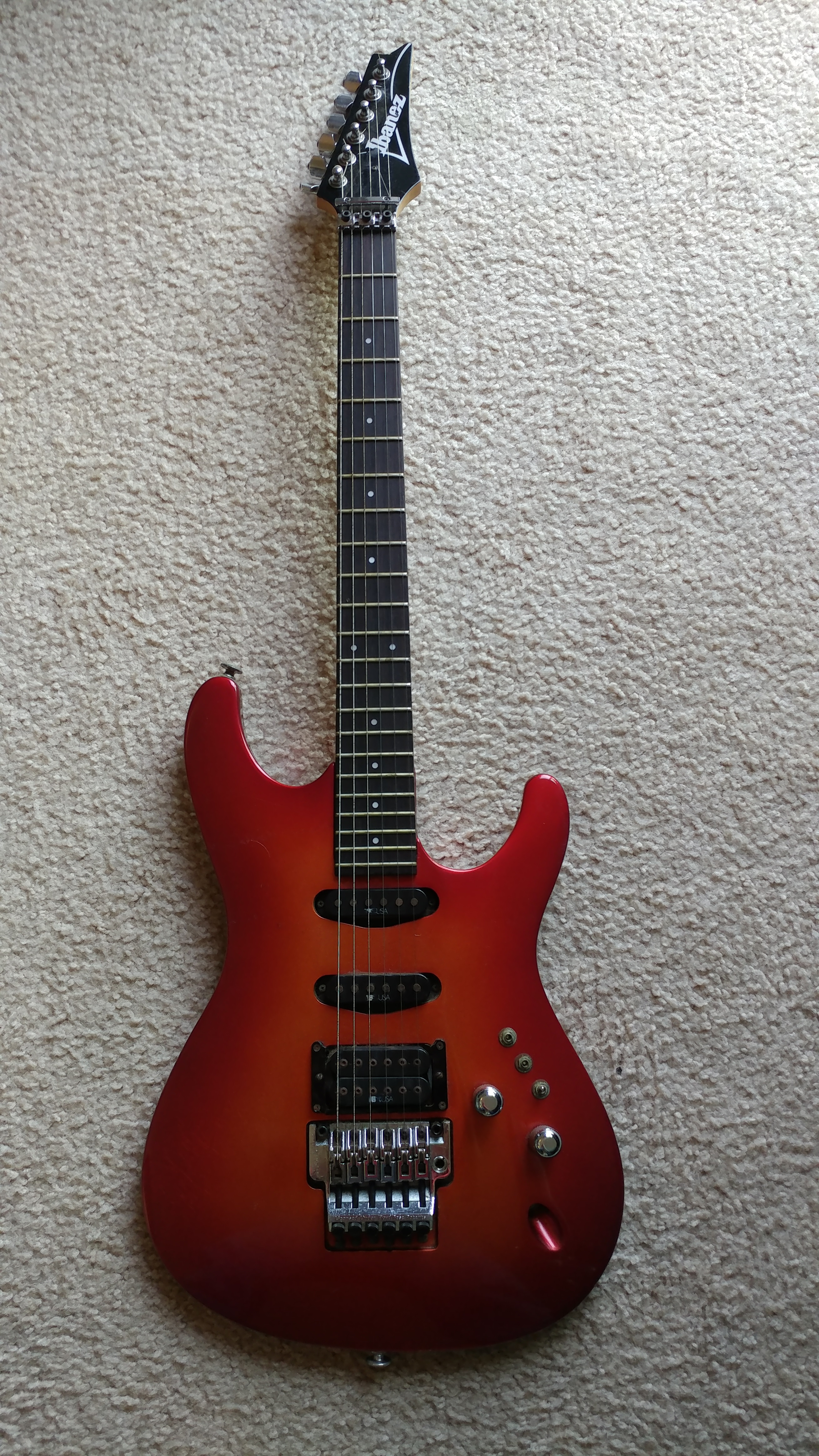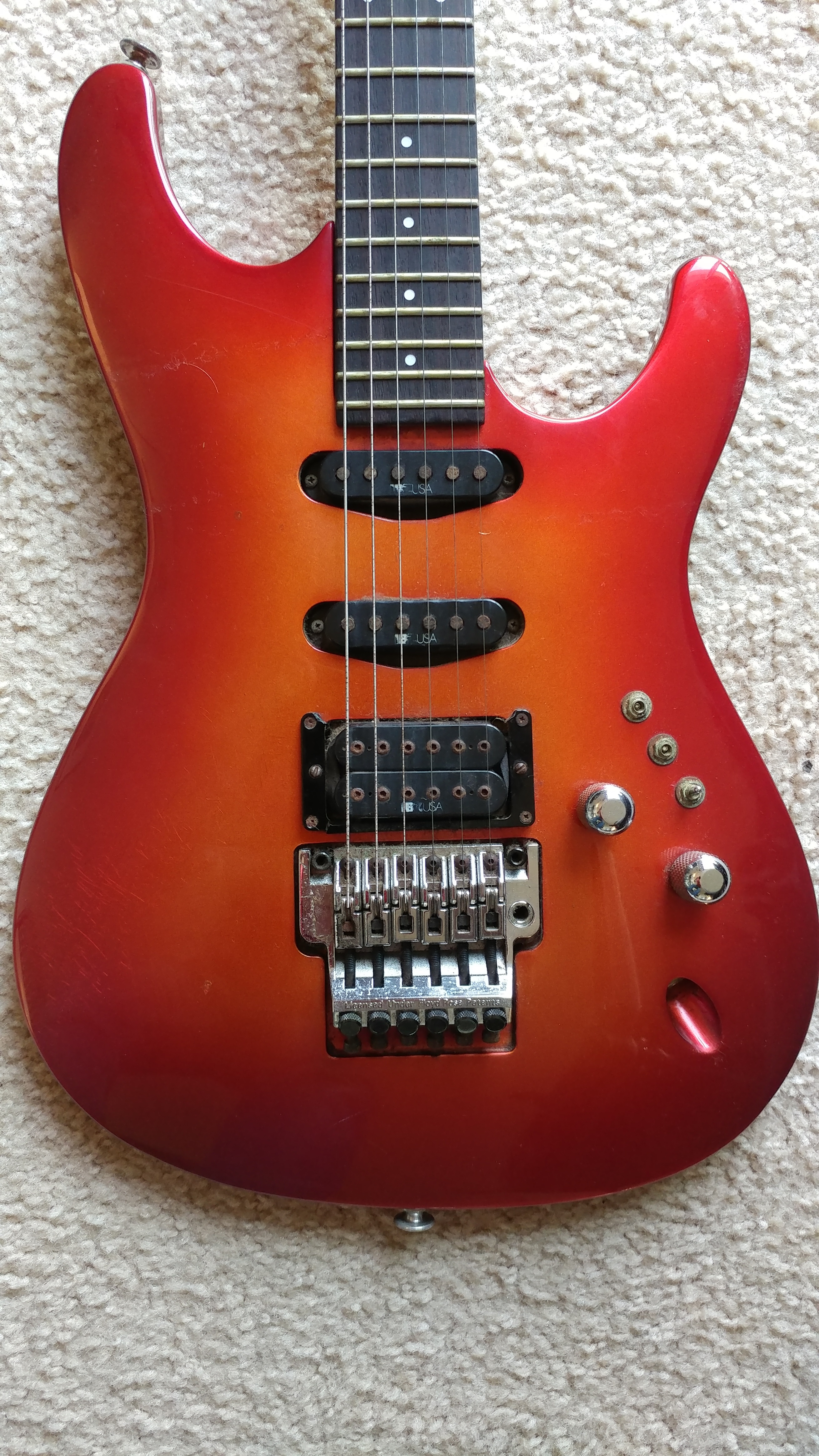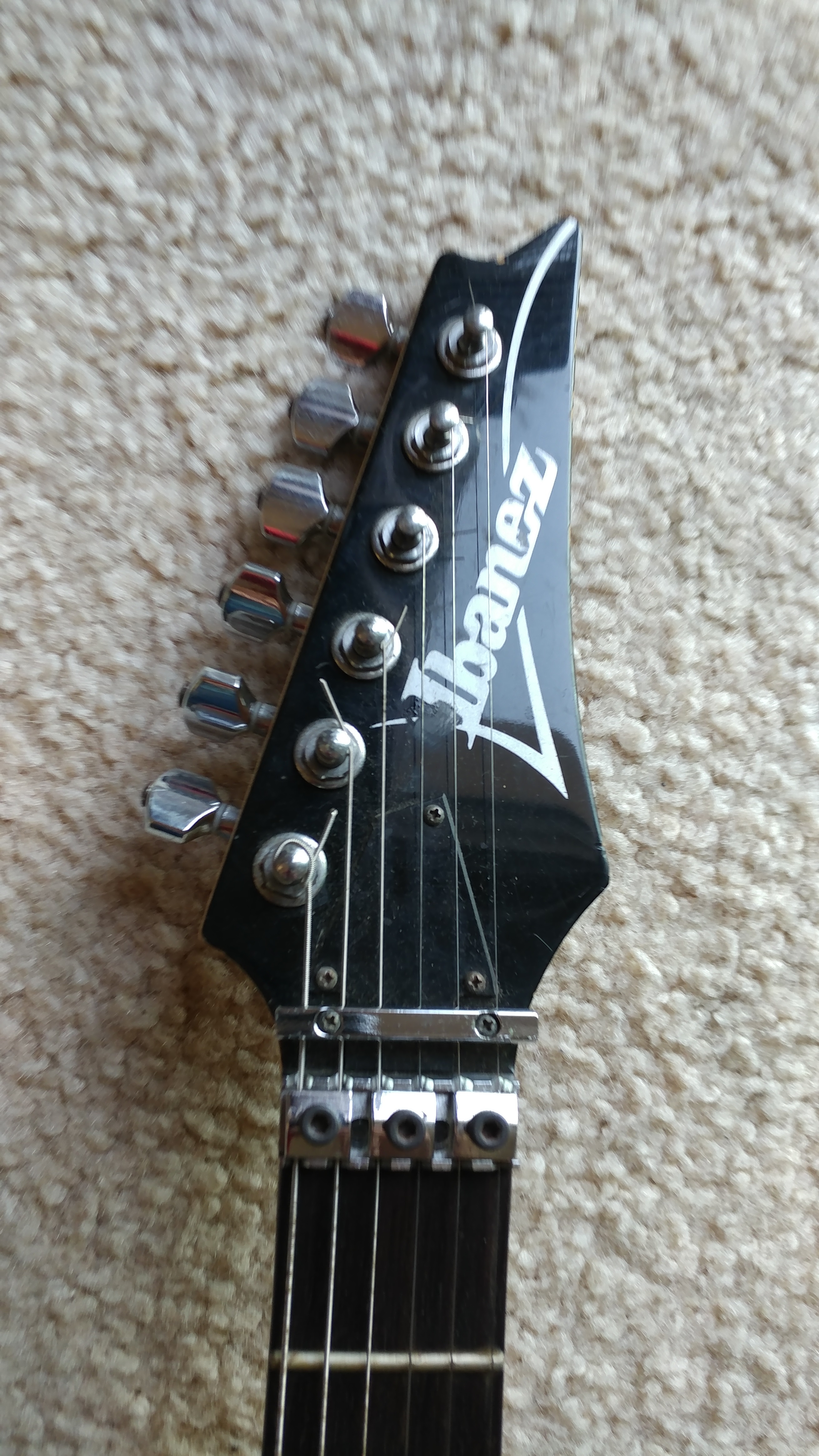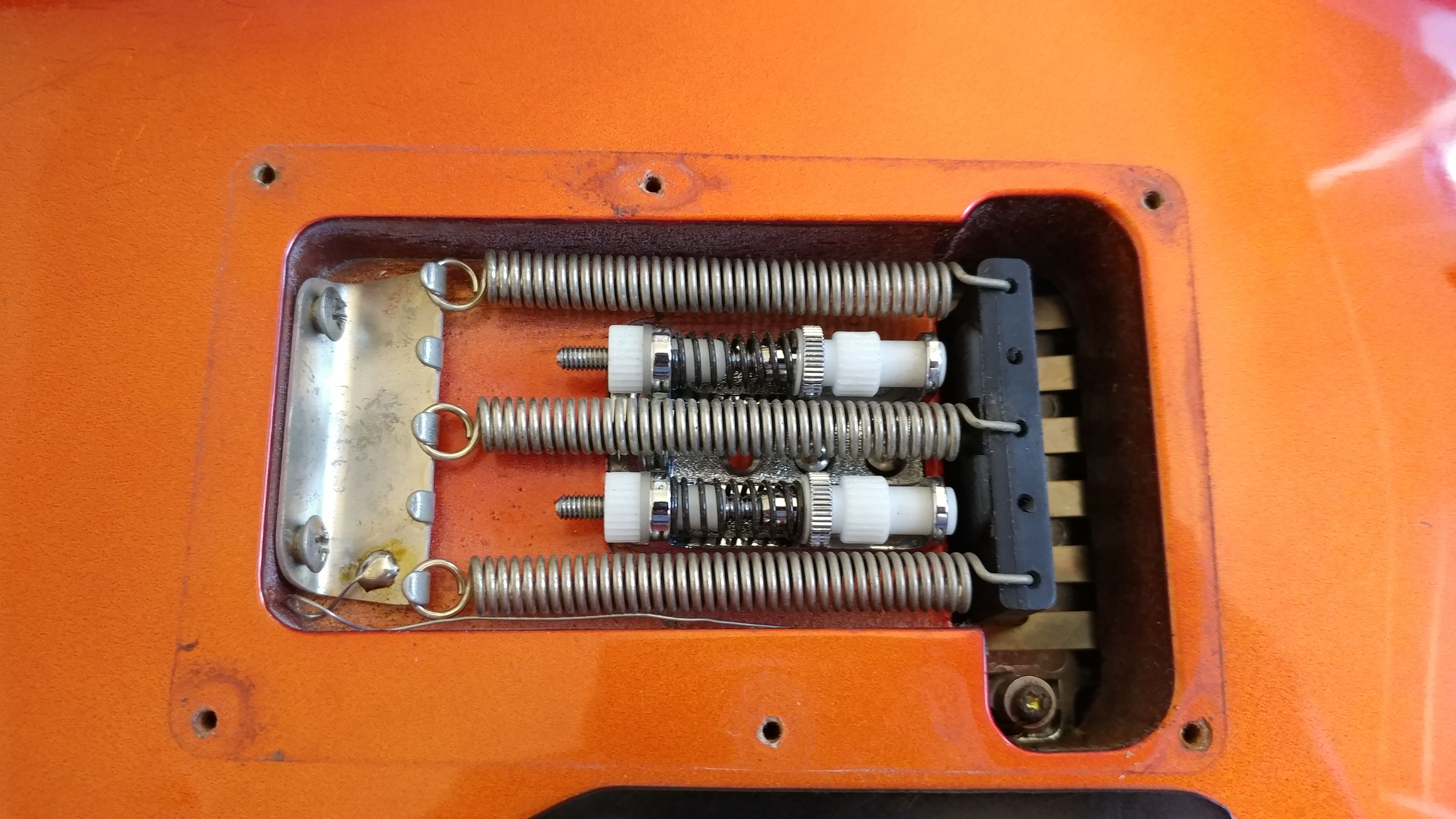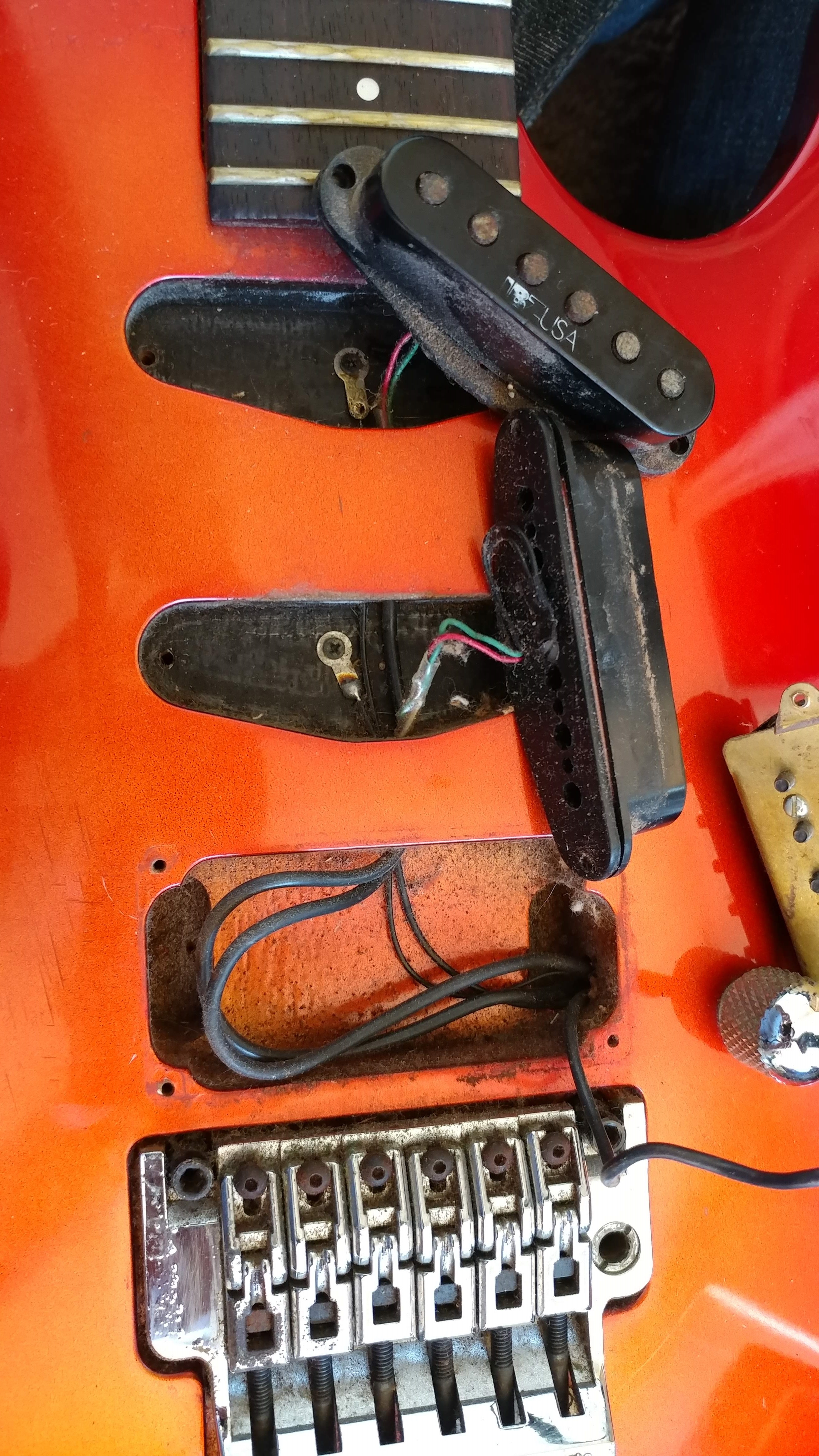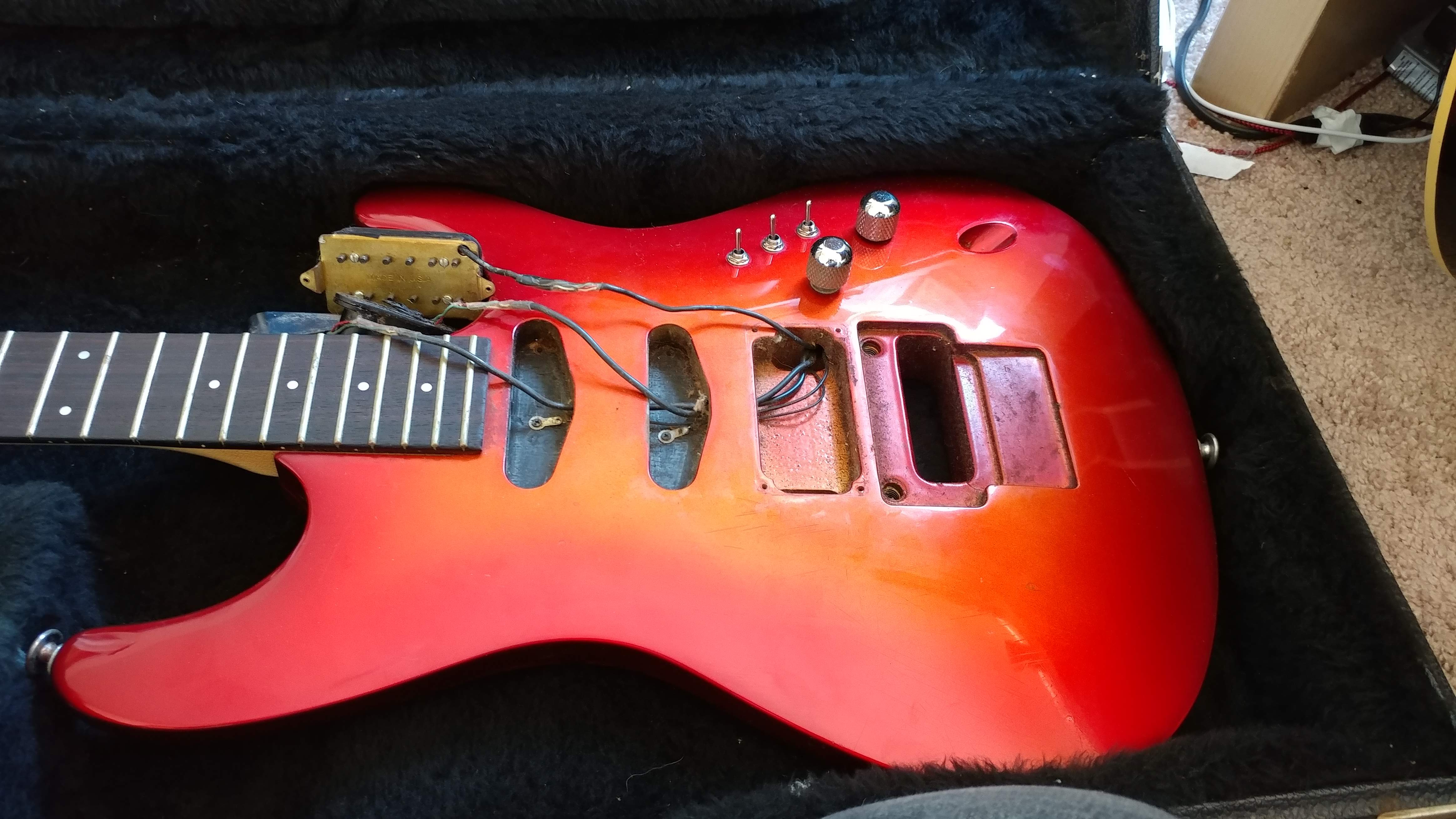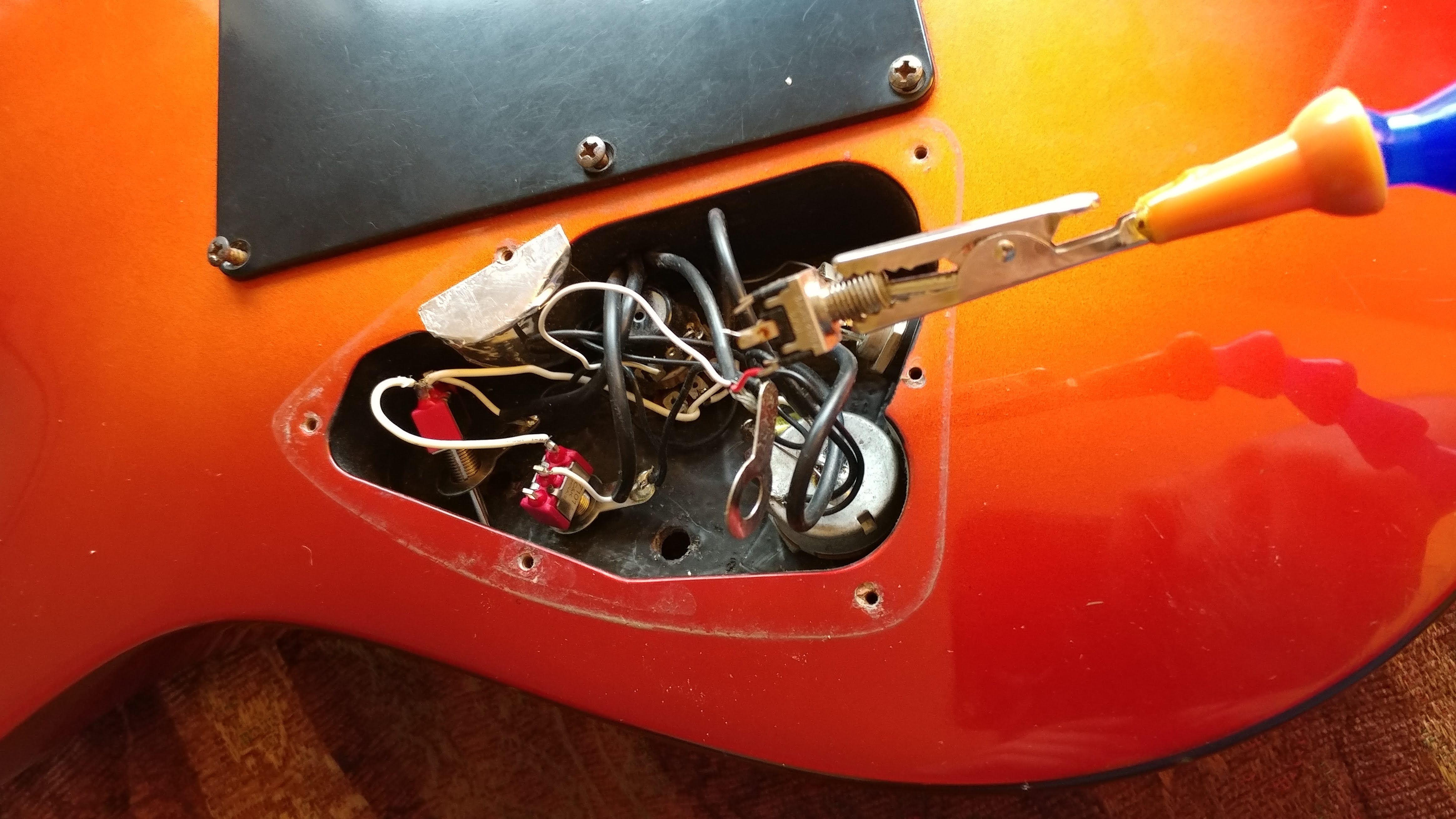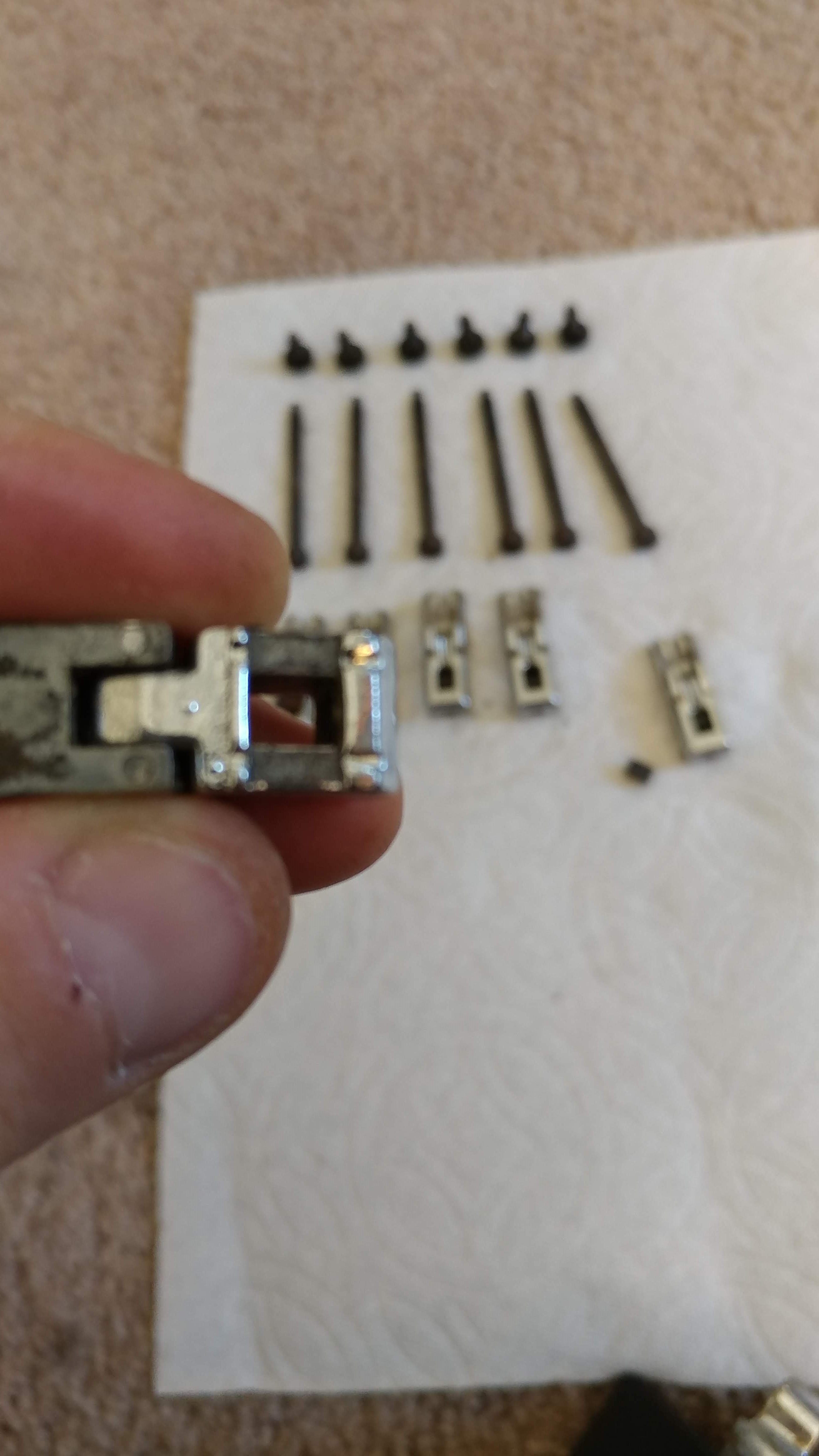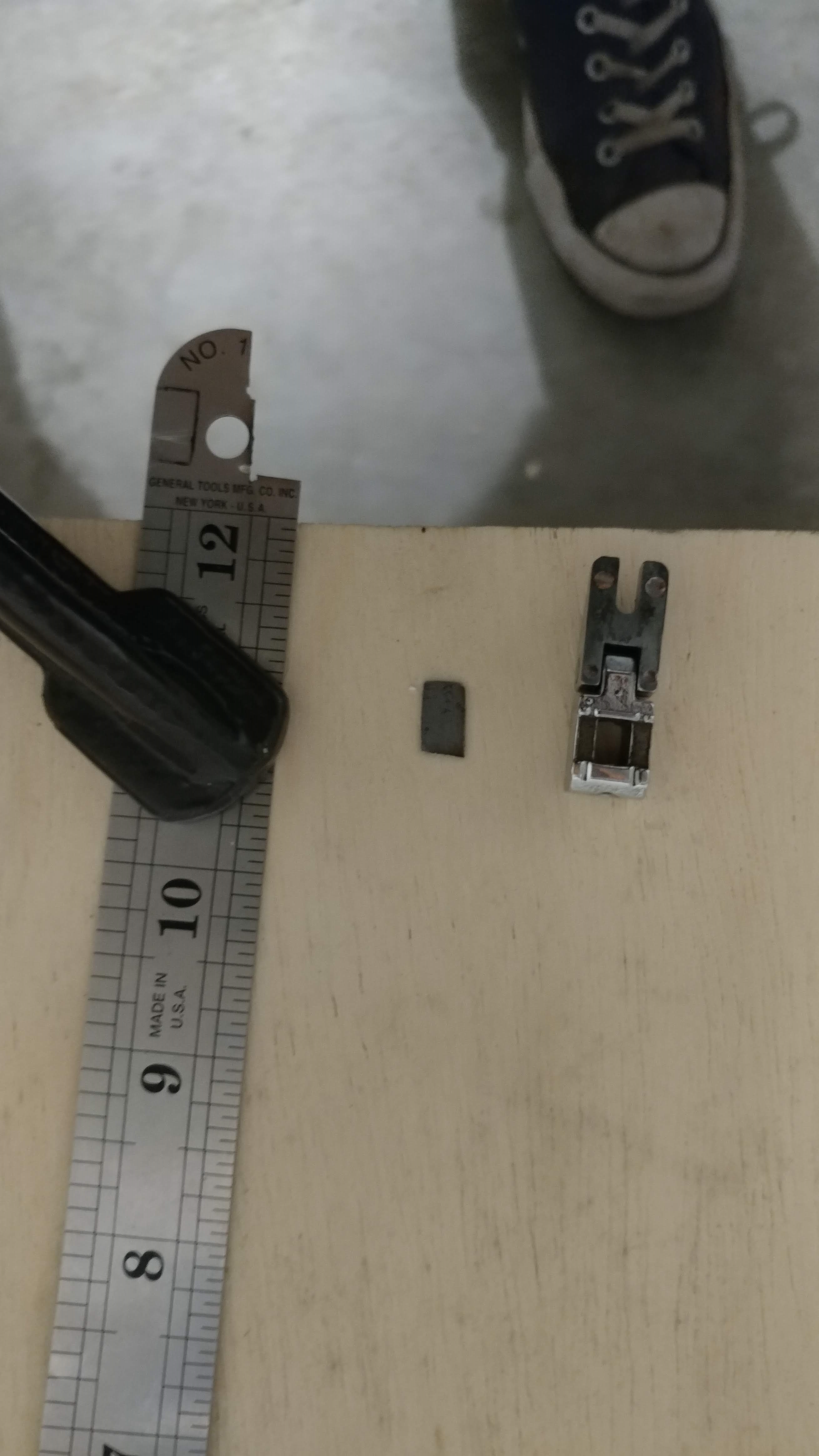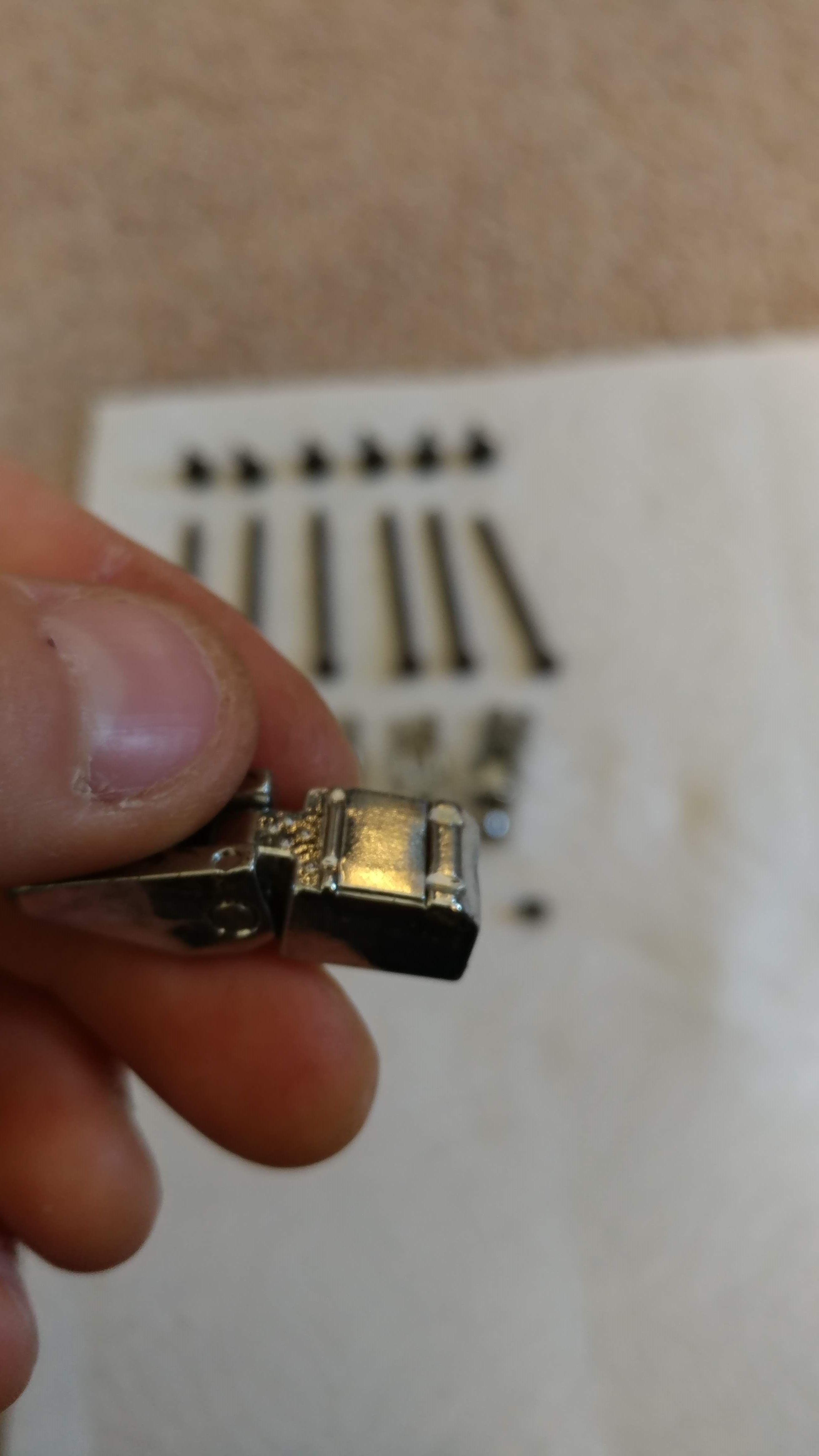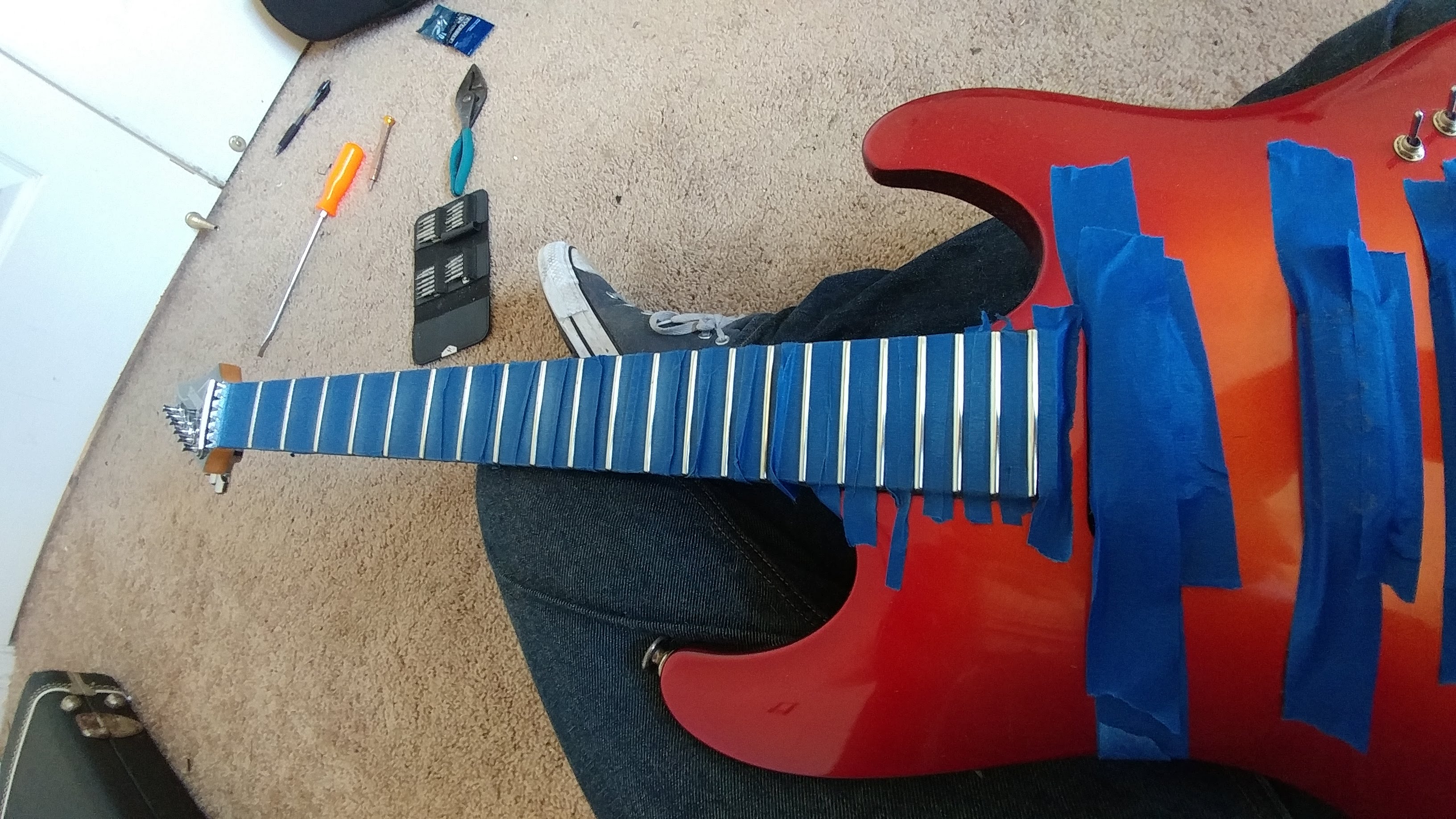My mother gave me this guitar the same time I picked up my late Uncles Les Paul clone. Complete with case and everything. It looks dirty but didn’t seem like anything that was beyond repair (nothing like the Gibson I repaired).
After a lot of digging I determined this to be a 1987 Ibanez 540S which was pretty exciting since it seemd somewhat unique, it was one of the last Ibanez guitars to feature an original Ibanez Edge bridge with Backstop. Up until receiving the Gibson and this guitar the only guitar I owned was a Fender Squire Strat so this was pretty exciting.
Assessing the damage
Generally the guitar was pretty dirty. There was rust on each of the frets and the fretboard looked very dried out. The body had scratches over it and lots of dust/dirt collected. It would need some TLC.
The guitar had three selector switches and a two potentiometer knobs, one of which also had a built in switch actuated by pressing down on it. Two of the three selector switches had their stems broken off and all of them looked extremely rusty.
I plugged it into an amp and tested it out, with most of the toggle switches stuck in place I could only try a few configurations (at this time I did’t even know about the built in toggle in the volume knob). The guitar made some noise when the bottom toggle switch was set in one direction, and no noise in the other.
Before doing anything I made sure to read up on the Floyd Rose lockin temelo system since I had never seen anything like it before in person. I am happy I did because without unscrewing the locking nut you can snap the headstock off if you just cut the strings of like I would for my Strat.
I started by unscrewing the locking nut at the top and loosening the strings and cut them off, the bridge fell flat. I unscrewed the back and took at look at the internals. Apart from some dust/dirt and rusted backplate screws evertyhing seemed pretty good looking. I took the bridge out and examined the pickups. The humbucker pickup ring was bracked in two places but otherwise the humbucker just looked rusty. The single-coil pickups didn’t have any ring and just looked rusty. Unless there was electronics failure I saw no reason why this guitar wouldn’t work just fine, rusty pickups don’t usually cause failure.
Repair Work
Selector Switches
I knew I was going to need to replace the pickup selector switches so my first step was to understand why kind I needed. I took a ratchet and with some elbow-grease got the mounting nuts for all them loose. Pulling the switches out through the back I saw they were pretty standard. I took the calipers and magnifying glass to the and recorded what I could:
5.88mm toggle switch shaft thread diameter
6.2mm hole diameter for threaded shaft
Shaft length 8mm
Toggle switch stem length 11.5mm above end of shaft
Package size 10.5mm x 12mm
Package height 7mm
MTN301
3A AC 250V 8701
Three way switch
I hopped on Digikey but couldn’t find the exact switch so I decided to go with the closest one I could find.
After they arrived I soldered them on in the same manner I saw the originals, hoping these would do the trick.
Ibanez Edge
Since I had no ideahow long this thing had been laying around (from the look of the dirt it was probably ages) I decided it would be a good idea to do a deep clean on the bridge. Luckily for me there are many videos about how to fully disassemble and clean these things and the Ibanez wiki even has the manual for it complete with exploded view.
I fully disassembled it, cleaning each part in a hot bath of water, then with rust remover, back into hot water, drying if off, then spraying WD-40 on it.
While dis-assembling I noticed some of the string-stopers (small square pieces of metal at the bottom that stop strings from poking through the entire bridge) came off when I was scrapingo out dirt from the string stopper hole. In addition one of them was completely missing. I found out that this was a common complaint of owners of these bridges (that the stopppers come off and get lost) so I measured the dimensions of a string stopper than had fallen off and cut out a piece from my aluminum ruler that happened to be very close to the same thickness as the stopper. I sanded the replacement down and I glued all the stopppers in with quick-set clear epoxy.
After re-assembling the bridge I was very happy with the result.
Neck and Frets
The neck was extremely dry and the frets had spots of green rust on them, this didn’t seem like a huge tast to fix so I ordered some 0000 grade steel wool (the finest it comes in) and I taped off the neck and pickups (fine steel wool fragments and strong magnets do not mix well) and got to work scrubbing the rust off. To get the sides of the frets I took a spuger tool and pushed it agaist the wool and up to the sides of the frets. When all was said and done the frets were looking pretty great!
I removed all the tape and applied fretboard oil (which I already had for keeping my Strat happy) to the fretboard. I was lucky that the fretboard was rosewood and I already had rosewood fretboard oil.
Pickups
The pickup screws and springs were all pretty rusty so I figured I would get new ones, in addition the pickup ring for the humbucker would need to be replaced.
Sourcing a new pickup ring for this guitar was a huge pain since it was so old. Ibanez had moved on from supplying parts and I couldn’t find anyone on eBay with it.
I measured the distance for the mouting holes to be 81.5mm width and 38mm height and set out to find a new pickup ring for the humbucker. Eventually I landed on one that fit the bill and ordered it only to find out it was just a single millimeter off! Luckily there was enough play in the system that I could still get the screws in.
The single coil pickups on this guitar were easier to deal with since all I needed for them were new screws and cone springs. Aside fro mthe awkwardness of dealing with mounting it without buckling the springs in a weird way they were pretty simple to put back in.
Getting strung up
The Floyd Rose sure is a pain in the butt to string up, but once done the guitar was looking great (well, as great as a 1987 guitar found in the dumpster can look presumably). I plugged it in and heard noise! I tested every selector switch as well as the potentimeter switch and everything seemed to be working great!
With all said and done I call this project a success, with much less effort than the Gibson clone.
